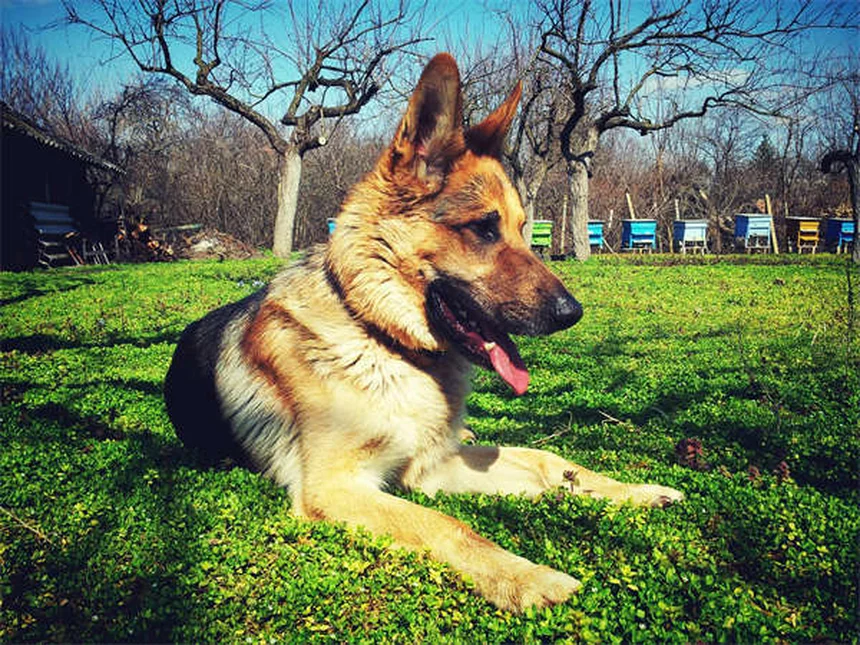Advertisement
Why does my cat attack me? The answer is: your cat isn't being mean - there's always a reason behind feline aggression. Whether it's playtime getting too rough, fear, or even pain, understanding why your cat lashes out is the first step to fixing the problem. I've worked with hundreds of cat owners dealing with this exact issue, and let me tell you, most aggression cases can be improved once you identify the root cause.From my experience, the top reasons cats attack their owners include play aggression (when your cat mistakes your hands for prey), petting-induced aggression (overstimulation from too much affection), and redirected aggression (when your cat takes frustration out on you). But here's the good news - with some simple behavior adjustments and patience, you can help your cat feel more comfortable and reduce these unwanted attacks.Before we dive into solutions, there's one critical first step: if this is new behavior, schedule a vet visit immediately. Sudden aggression often signals health issues like arthritis or dental pain. Once medical causes are ruled out, we can focus on behavioral solutions that really work.
E.g. :Holiday Pet Safety Tips: 5 Vet-Approved Ways to Protect Your Pets
Advertisement
- 1、Why Does My Cat Suddenly Attack Me?
- 2、Playtime Gone Wrong
- 3、The Petting Paradox
- 4、Fear: The Hidden Aggressor
- 5、Territorial Troubles
- 6、Mama Bear Mode
- 7、The Redirected Aggression Puzzle
- 8、When Pain Causes Problems
- 9、Final Thoughts on Feline Aggression
- 10、The Surprising Psychology Behind Cat Attacks
- 11、The Socialization Factor
- 12、The Age Factor in Cat Aggression
- 13、The Multi-Cat Dynamic
- 14、Environmental Enrichment Solutions
- 15、When to Seek Professional Help
- 16、FAQs
Why Does My Cat Suddenly Attack Me?
Ever been minding your own business when wham! - your sweet kitty turns into a tiny tiger? Let's figure out what's really going on when your cat attacks without warning.
First Things First: Rule Out Health Issues
If your normally chill cat suddenly becomes aggressive, schedule a vet visit immediately. Pain can make even the gentlest cat lash out. Think about it - wouldn't you get grumpy if you had a toothache and someone kept poking you?
Now, assuming your cat gets a clean bill of health, let's explore the most common reasons for unprovoked attacks.
Playtime Gone Wrong
When Play Gets Too Rough
Remember how you played tag as a kid and sometimes it got too intense? Cats experience the same thing! Play aggression often happens when:
- Your hands become the "prey" during play
- Your cat gets overstimulated
- They practice hunting behaviors on you
Here's a fun fact: kittens who don't have littermates to play with often develop worse play aggression because they never learn proper boundaries. It's like being the only kid on the playground - you make up your own rules!
 Photos provided by pixabay
Photos provided by pixabay
How to Fix Play Aggression
Try these simple solutions:
| Problem | Solution |
|---|---|
| Attacking hands during play | Use wand toys to keep distance |
| Ambushing from under furniture | Block access to hiding spots during play |
| Overexcitement | Schedule multiple short play sessions |
And here's a pro tip: always end play sessions before your cat gets too worked up. Leave them wanting more!
The Petting Paradox
Love-Hate Relationship With Affection
Ever notice how your cat seems to enjoy pets one minute, then suddenly attacks? This is called petting-induced aggression, and it's more common than you think.
Why does this happen? Cats have sensitive skin and can become overstimulated quickly. It's like when someone keeps tickling you after you've said "stop!"
Reading Your Cat's Signals
Watch for these warning signs:
- Tail twitching
- Ears flattening
- Skin rippling
- Dilated pupils
When you see these signs, it's time to stop petting immediately. Never force affection - this only makes the problem worse.
Fear: The Hidden Aggressor
 Photos provided by pixabay
Photos provided by pixabay
How to Fix Play Aggression
Did you know fear is one of the most common causes of cat aggression? It makes perfect sense when you think about it. In the wild, showing fear makes you vulnerable, so cats learn to attack first when frightened.
Common fear triggers include:
- New people in the home
- Loud noises
- Vet visits
- Changes in routine
Helping Your Scaredy-Cat
Here's a question: what's better than forcing a scared cat to face their fears? Gradually helping them feel safe! Try these techniques:
- Create safe hiding spots
- Use pheromone diffusers
- Provide high perches for observation
- Offer treats when they stay calm
Remember: patience is key. You wouldn't expect someone afraid of spiders to hold a tarantula on day one!
Territorial Troubles
Mine! All Mine!
Cats are territorial by nature. In multi-cat households, you might see status-induced aggression where one cat tries to control access to resources.
Funny story: my friend's cat would guard the hallway like a tiny bouncer, swatting at anyone who tried to pass. We called him "The Doorman"!
 Photos provided by pixabay
Photos provided by pixabay
How to Fix Play Aggression
To reduce territorial aggression:
- Provide multiple resources (food bowls, litter boxes)
- Create vertical space with cat trees
- Use positive reinforcement when cats interact peacefully
Here's an interesting fact: cats don't naturally share well because in the wild, they're solitary hunters. We're asking them to do something that goes against their instincts!
Mama Bear Mode
Protective Mother Instincts
New mom cats can become extremely protective. This maternal aggression is completely normal - she's just looking out for her babies.
Think about it: if someone strange approached your newborn, wouldn't you be on high alert too?
Respecting a New Mom's Space
When dealing with a protective mother cat:
- Limit visitors
- Provide a quiet nesting area
- Avoid handling kittens unnecessarily
- Let mom come to you for attention
Good news: this type of aggression usually decreases as the kittens grow older and more independent.
The Redirected Aggression Puzzle
Taking Frustration Out on You
Here's a head-scratcher: why would your cat attack you when they're actually mad at something else? This is called redirected aggression, and it's more common than you'd think.
Imagine you're angry at your boss but can't yell at them, so you snap at your spouse instead. Cats do the same thing!
Common Triggers
Redirected aggression often happens when your cat sees:
- Another cat outside
- Wild animals
- Unfamiliar noises
- Sudden movements
Calming Techniques
Try these solutions:
- Distract with toys when agitated
- Close curtains if outdoor cats trigger attacks
- Use pheromone diffusers
- Create a safe "time-out" space
Here's a question: what's the best way to handle an already-agitated cat? Give them space! Trying to comfort an upset cat often makes things worse.
When Pain Causes Problems
Hurt Cats Hurt Others
Pain-induced aggression is particularly heartbreaking because your cat isn't being mean - they're just hurting. Common causes include:
- Arthritis
- Dental issues
- Injuries
- Internal problems
Think about how you act when you have a migraine. Not exactly sunshine and rainbows, right?
Helping a Cat in Pain
If you suspect pain:
- Schedule a vet visit immediately
- Handle your cat gently
- Provide easy access to resources
- Consider pain management options
Remember: cats hide pain well, so behavior changes might be your only clue something's wrong.
Final Thoughts on Feline Aggression
Understanding why your cat attacks is the first step to solving the problem. Whether it's play aggression, fear, or pain, there's usually a logical explanation for your cat's behavior.
The good news? Most aggression issues can be improved with patience and the right approach. Just remember - your cat isn't being "bad," they're just being a cat!
Now go give your feline friend some space (or cuddles, depending on their mood) and put these tips into action. Happy coexisting!
The Surprising Psychology Behind Cat Attacks
Understanding the Predator Brain
You know that intense look your cat gets right before pouncing? That's their inner predator taking over! All domestic cats retain strong hunting instincts, even if they've never caught anything more exciting than a toy mouse.
Here's something fascinating - when cats play attack us, they're often following the exact same sequence they'd use on real prey: stalk, chase, pounce, bite. The only difference is we're about 20 times their size! No wonder we get surprised when our tiny tigers decide to practice their skills on us.
The Importance of Mental Stimulation
Ever wonder why your cat seems extra bitey when you've been busy all day? Boredom is a major trigger for aggressive play. Indoor cats especially need regular mental challenges to burn off that predatory energy.
Try rotating different types of toys to keep things interesting. Puzzle feeders, laser pointers, and even cardboard boxes can provide hours of entertainment. Remember - a tired cat is a well-behaved cat!
The Socialization Factor
Kittenhood Experiences Matter
Did you know that kittens who don't get proper socialization between 2-7 weeks old often develop more aggressive tendencies? It's like they never learned the feline version of "play nice!"
If you've adopted an adult cat with socialization issues, don't worry - you can still help them improve. The key is going at their pace and using positive reinforcement. Think of it as teaching an old cat new tricks!
Reading Feline Body Language
Here's a quick guide to understanding your cat's mood:
| Body Part | Relaxed | Agitated |
|---|---|---|
| Ears | Forward and alert | Flattened or twitching |
| Tail | Still or gently swaying | Puffed up or lashing |
| Whiskers | Forward slightly | Pulled back tightly |
Why does this matter? Because learning these signals can help you avoid about 90% of surprise attacks! When you see those warning signs, it's time to back off and give your cat space.
The Age Factor in Cat Aggression
Teenage Rebellion in Cats
Believe it or not, cats go through a rebellious teenage phase just like humans! Between 6-18 months, many cats test boundaries with increased play aggression. It's their way of figuring out what they can get away with.
This is actually a great time to reinforce good behavior. Consistent responses to aggression (like ending play immediately) help your cat learn the house rules. Think of yourself as the feline equivalent of a firm but fair parent!
Senior Cat Considerations
When older cats suddenly become aggressive, it's often due to cognitive decline or undiagnosed pain. They might feel confused or vulnerable, leading to defensive behavior.
Simple adjustments can make a big difference for senior cats:
- Keep routines consistent
- Provide night lights if they seem disoriented
- Use ramps to help them reach favorite spots
- Schedule more frequent vet checkups
Isn't it amazing how our understanding of cat behavior keeps evolving? What we once dismissed as "mean" behavior is now recognized as communication attempts!
The Multi-Cat Dynamic
Social Hierarchy in Cat Colonies
Ever notice how cats in the same household seem to have an unspoken pecking order? That's because cats naturally form social structures, even if they're not pack animals like dogs.
In multi-cat homes, aggression often stems from resource guarding or status challenges. The solution? Make sure you have enough resources (food, water, litter boxes) for everyone plus one extra. This reduces competition and tension.
Introducing New Cats Properly
Here's a question many cat owners get wrong: should you just put new cats together and let them "work it out"? Absolutely not! Proper introductions take time and patience.
Start with scent swapping - rub each cat with a towel and let the other smell it. Then progress to feeding on opposite sides of a closed door. Finally, use baby gates for visual contact before full introductions. This gradual process can prevent months (or years!) of conflict.
Environmental Enrichment Solutions
Creating a Cat-Friendly Home
You'd be surprised how much simple changes can reduce aggressive behavior. Cats need vertical space, hiding spots, and interesting things to watch. It's like turning your home into a feline amusement park!
Some easy enrichment ideas:
- Window perches for bird watching
- Cat trees of varying heights
- Paper bags (remove handles!) for hiding
- Rotating selection of toys
The Power of Scheduled Play
Here's a secret: most cats thrive on routine. Scheduling play sessions at the same times each day (especially before meals) satisfies their hunting instincts in a controlled way.
Try this formula: 10-15 minutes of active play, followed by a meal. This mimics the natural hunt-eat-groom-sleep cycle. You'll be amazed how much this simple change can reduce random attacks!
When to Seek Professional Help
Recognizing Serious Behavior Issues
While most aggression problems can be solved at home, sometimes you need backup. If your cat's aggression is:
- Increasing in frequency or intensity
- Causing injury to people or other pets
- Accompanied by other behavior changes
...it's time to call in a certified cat behaviorist. These professionals can identify subtle triggers you might miss and create customized behavior modification plans.
Medical Conditions That Mimic Aggression
Did you know some health issues can look like behavioral problems? Hyperthyroidism, for example, can make cats irritable and reactive. Neurological conditions might cause unprovoked attacks.
This is why a vet check is always step one when dealing with sudden aggression. You wouldn't punish someone for yelling if they stubbed their toe, right? Same principle applies to our feline friends!
E.g. :my cat keeps attacking me unprovoked : r/CatTraining
FAQs
Q: Why does my cat suddenly bite me when I'm petting them?
A: This is called petting-induced aggression, and it's more common than you think! Cats have super sensitive skin and can get overstimulated quickly - imagine someone tickling you nonstop after you've said "stop!" Watch for warning signs like tail twitching, ears flattening, or skin rippling. The solution? Keep petting sessions short, respect when your cat has had enough, and always let them walk away. Pro tip: most cats prefer 3-5 minute petting sessions max.
Q: How can I tell if my cat is playing or being aggressive?
A: Great question! Play aggression usually involves pouncing, batting with claws retracted (mostly), and short bursts of energy. Real aggression comes with hissing, growling, ears pinned back, and serious biting. Here's a trick I use: if you freeze and stop reacting, play aggression will usually stop, while true aggression continues. Either way, using wand toys instead of your hands prevents both problems!
Q: What should I do when my cat attacks my feet under the covers?
A: Ah, the classic "bed mouse" game! This is pure play aggression - your cat thinks your wiggling toes are prey. First, don't reinforce the behavior by reacting (I know it's hard!). Instead, provide appropriate prey toys before bedtime and consider closing your bedroom door if it's severe. Many of my clients have success with a pre-bedtime play session to tire out their cat's hunting instincts.
Q: Why does my cat attack me when they see another cat outside?
A: This is redirected aggression - your cat gets worked up about the outdoor cat but takes it out on you because they can't reach the real target. It's like when you're mad at your boss but snap at your spouse. Solutions include blocking window views of outdoor cats, using pheromone diffusers, and having interactive toys ready to redirect that energy. I've seen cases where simply closing the blinds reduces these attacks by 80%!
Q: My cat was fine before - why are they suddenly aggressive?
A: Sudden behavior changes always warrant a vet visit first - pain from conditions like arthritis or dental disease can make the sweetest cat lash out. If health issues are ruled out, consider recent changes in your home (new pets, schedule changes, etc.). Cats are creatures of habit, and even small disruptions can cause stress. In my practice, we often find that combining environmental adjustments with positive reinforcement creates noticeable improvement within weeks.

